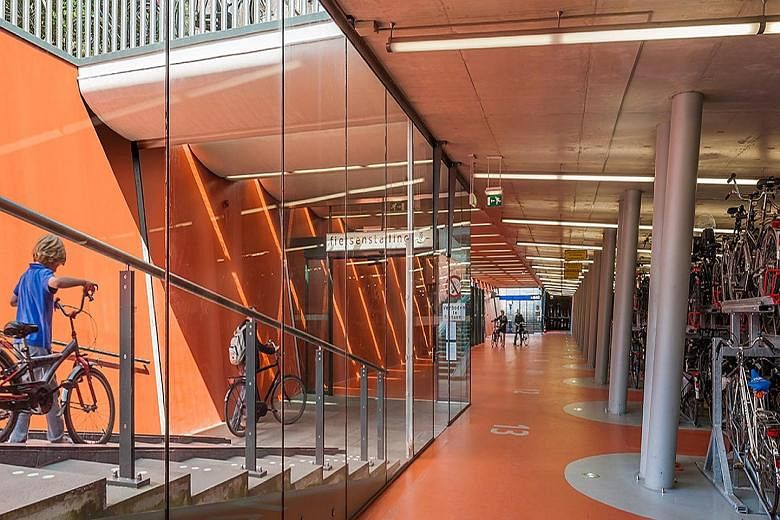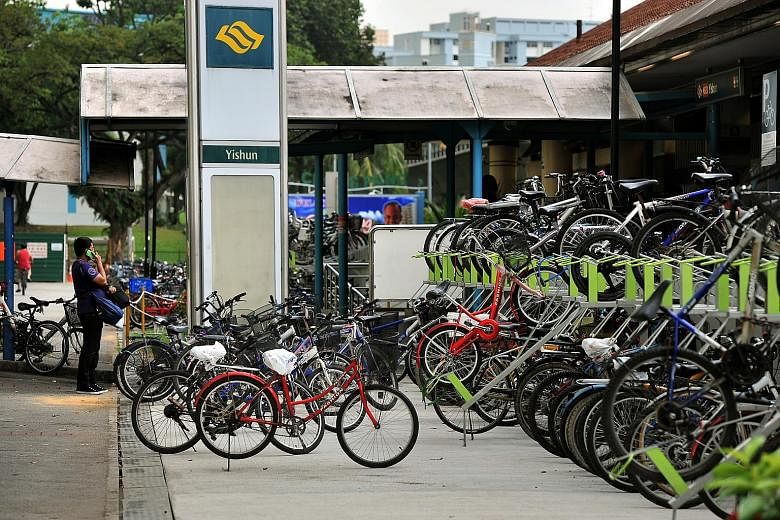Underground parking spaces for bicycles, which would drastically reduce theft and encourage more people to cycle, is a good fit for land-scarce Singapore, said a Dutch engineering expert.
Professor Theo Salet recalled how he used to drive 7km every morning, in an old beat-up car he bought for $2,000, to a train station to get to work.
But after a partially underground bicycle parking area was built at the station five years ago, he commutes there with his $2,000 bike instead. He leaves it locked at the secure facility, which is monitored by cameras, for the day while he lectures at the university in the nearby city of Eindhoven.
Citing himself as an example, Prof Salet said underground bicycle parking would encourage many more people to cycle because it almost eradicates bike theft - a major concern of commuters.
"In cities where there is limited public space, it frees up space on the surface for other developments," he said.
Underground bicycle parking spaces are already being built in Singapore, albeit on a smaller scale, at four stations on the Thomson-East Coast Line.
They will be ready by 2024.
Prof Salet, who is also head of building design at Dutch engineering consultancy Witteveen+Bos, spoke to The Straits Times on the sidelines of an Urban Sustainability R&D Congress last month.
In his home country, the Netherlands, he designed one of the biggest underground bicycle parks in the world. Located in the town of Haarlem just outside Amsterdam, it can fit more than 5,000 bikes.
It was completed in 2013, built underneath the square in front of the Haarlem railway station.
Commuters wheel their bikes down ramps into the cavernous but brightly lit space. The facility, painted a cheery orange, is free to use, but an attendant gives users a receipt to claim their bikes at the end of the day. From the bike park, there is direct access to the train platforms.
"Attention has to be paid to make the space attractive. If it's dark, people would be scared to use it," said Prof Salet.
Experts say underground bicycle parking will solve similar problems in Singapore. For instance, at many MRT stations - such as Yishun, Tampines and Jurong East, where large numbers of cyclists cycle to take the train - bikes are parked haphazardly, sometimes chained to fences and road dividers.
Transport researcher Paul Barter said facilities such as underground bicycle parks keep bikes away from the elements. "We are getting to the point where such infrastructure could be worth investing in," he said. Indeed, some companies have already done so, by providing bicycle parking and other end-point facilities for staff who cycle.
Cycling enthusiast Edmund Lee, JP Morgan Singapore's senior country officer, spearheaded an effort to install secure cages to park bicycles and to install showers at the investment bank's two offices.
At least 80 bank employees have been cycling to work since the cages were installed in 2009.
"Once more people are able to secure their bikes and take a shower before work... cycling to work in Singapore will become more popular and we will see benefits such as better health, less road congestion and less pollution," said Mr Lee, 55.



